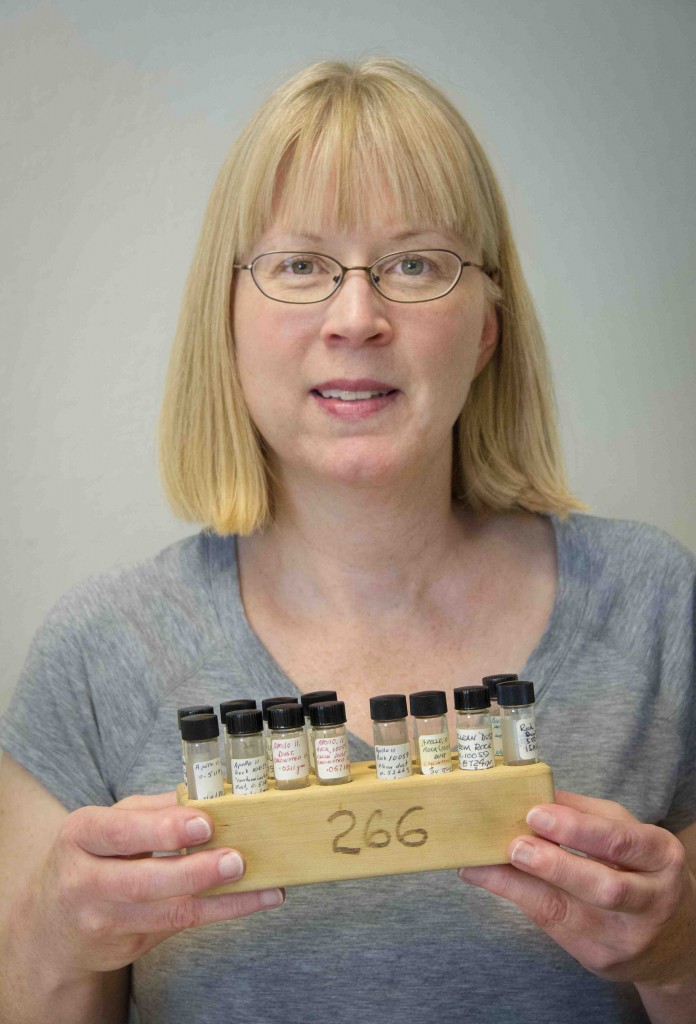When Apollo 11 returned from its historic flight in 1969, the moon rocks and lunar soil collected by Neil Armstrong and Buzz Aldrin eventually found their way to some 150 laboratories worldwide. One of those was the Space Sciences Laboratory in Latimer Hall on the UC Berkeley campus. After experiments were conducted and papers published, those samples should have been sent back to NASA. Instead they wound up in storage, where they sat collecting dust until they were discovered more than four decades later.

Berkeley Lab archivist Karen Nelson holds lunar samples used by Melvin Calvin for scientific experiments 43 years ago. (Photo by Roy Kaltschmidt)
Lawrence Berkeley National Laboratory (Berkeley Lab) archivist Karen Nelson uncovered the moon dust—about 20 vials with handwritten labels and dated “24 July 1970”—last month while reviewing and clearing out artifacts from Berkeley Lab’s warehouse. “They were vacuum sealed in a glass jar,” said Nelson, who has worked in Berkeley Lab’s Archives and Records Office for 17 years. “We don’t know how or when they ended up in storage.”
Along with the jar was a copy of the paper “Study of carbon compounds in Apollo 11 and Apollo 12 returned lunar samples,” published in the Proceedings of the Second Lunar Science Conference in 1971. Among the five co-authors, all from the Space Sciences Laboratory, is Melvin Calvin, who was also an associate director of Berkeley Lab (then known as Ernest O. Lawrence Berkeley Laboratory) and 1961 winner of the Nobel Prize in Chemistry.
The paper examined the nature and chemical characteristics of the carbon in the lunar samples. According to a biography of Calvin by Glenn Seaborg and Andrew Benson, Calvin helped shape NASA’s efforts to search for extraterrestrial life, including searching for organic and biologic compounds in the lunar samples.
Nelson contacted the Space Sciences Laboratory. “They were surprised we had the samples,” she said. She then contacted NASA, who asked that the samples be sent back but allowed her to first open the jar to remove the vials.
Next she is trying to figure out what to do with other equipment from Calvin’s lab, mainly glass pieces from Berkeley Lab’s own glass shop. In fact, Berkeley Lab’s warehouse in San Jose contains 140 other pieces of scientific equipment that Nelson, who has a master’s degree in museum studies, has been charged with clearing out. While a few of the more important items will go on display at Berkeley Lab, she hopes the Smithsonian might be interested in some of the others.
“We’re hoping another institution will be able to display them,” she said. “The problem is we don’t have room for display or storage.”
While the Berkeley Lab Archives and Records Office will still accept some historically significant artifacts, it is quite limited in what it can accept. Fortunately, in this age of supercomputers, there are fewer and fewer tangible scientific artifacts. “Scientists are using less machinery and more computers,” she said.
